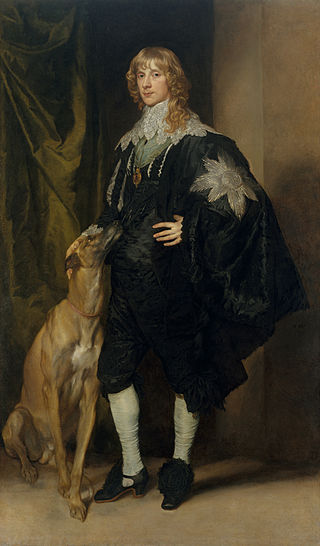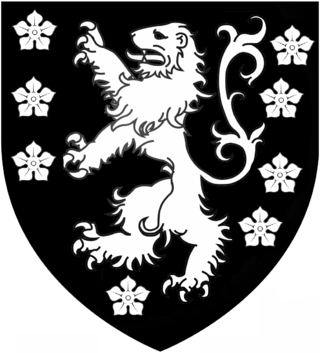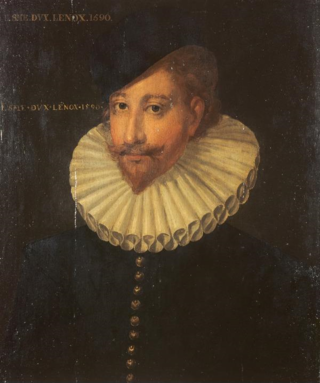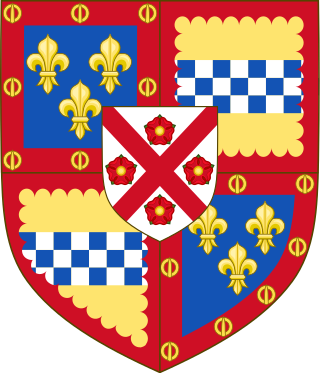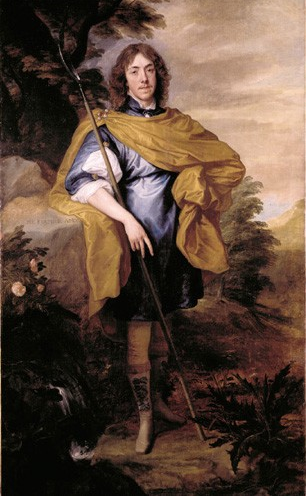| | | | | | | | | | | | | | | | |
| | | | | |
| | | | | | | | | | | | | Mormaer of Lennox (1st creation), 12th century |
|
| | | | | | | | William I
(c. 1142–1214)
King of Scotland | | David
(1152–1219)
Mormaer of Lennox, Earl of Huntingdon | | Ailín I
(d. c. 1200)
possiblyMormaer of Lennox |
|
| | | | | | | | | | | | | | | | | | | | |
|
| | | | | | | | | | | | Isobel of Huntingdon
(1199–1251) | | Ailín II
(d. 1217)
Mormaer of Lennox |
|
| | | | | | | | | | | | | | | | | | | | | | | | | | | | | |
| | | | | | | | | |
| | | | | | | | | | | | Robert V de Brus
(c. 1210–1295) | | Maol Domhnaich (Maldoven)
(d. 1250)
Mormaer of Lennox | | ? | | Gille Chriosd |
|
| | | | | | | | | | | | | | | | | | | | | | | | | | | | | | |
|
| | | | | | | | | | | | Robert VI de Brus
(1243–1304) | | Maol Choluim (Malcolm) I
(d. 1303)
Mormaer of Lennox | | Amlaibh | | Clan MacFarlane |
|
| | | | | | | | | | | | | | | | | | | | | | | | | |
|
| | | | | | | | | | | | Robert I
(1274–1329)
King of Scotland | | Maol Choluim (Malcolm) II
(d. 1333)
Mormaer of Lennox | | ? |
|
| | | | | | | | | | | | | | | | | | | | | | | | | |
|
| | | | | | | | | | | | Marjorie Bruce
(1296–1316) | | Domhnall (Donald)
(d. 1365)
Mormaer of Lennox | | ? |
|
| | | | | | | | | | | | | | | | | | | | | | | | | |
|
Edward III
(1312–1377)
King of England | | | | | | | | | | Robert II
(1316–1390)
King of Scotland | | Margaret
Countess of Lennox (?) | | Walter of Faslane
(also Baltar mac Amlaimh)
de factoMormaer of Lennox |
| |
| | | | | | | | | | | | | | | | | | Resigned, 1385 | | |
|
| Earl of Richmond (5th creation), 1342 | | | | | | | | | | | | | | | | | | | | | | | | |
| | | | | | | |
John of Gaunt
(1340–1399)
Earl of Richmond, Duke of Lancaster | | | | | | | | | | Robert III
(1337–1406)
King of Scots | | Robert Stewart
(c. 1340–1420)
Duke of Albany | | Donnchadh
(1385–1425)
Mormaer of Lennox |
|
| Earldom of Richmond (5th creation) surrendered, 1372 | | | | | | | | | | | | | | | | | | | | | | | |
|
| | | | | | | | | | | | | | | | | | | | | | | | | | | |
| | | | |
Henry IV
(1367–1413)
King of England | | John Beaufort
(1373–1410)
Earl of Somerset | | | | | | | | | | | Murdoch Stewart
(1362-1425)
Duke of Albany | | Isabella
(d. 1458)
Countess of Lennox |
|
| | | | | | | | | | | | | | | | | | | | | | | | Earldom of Lennox (1st creation) extinct, 1458 |
| | | | | | | | | | | | | |
| Earl of Richmond (6th creation), 1414 | | | | | | | Earl of Huntly, 1445 | | | | | | | | | | |
|
John of Lancaster
(1389–1435)
Duke of Bedford, Earl of Richmond | | John Beaufort
(c. 1403–1444)
Duke of Somerset | | Alexander Seton (Gordon)
(d. 1470)
1st Earl of Huntly | | James I
(1394–1437)
King of Scots | | Joan Beaufort
(c. 1404–1445) | | James Stewart
(c. 1399 – c. 1451)
Black Knight of Lorn | |
| | | |
| Earldom of Richmond (6th creation) extinct, 1435 | | | | | | | | | | | | | | | | | | | | | | | | | | | | | | | |
| | | | | | | | | | | | |
| | | | | | | | | | | | | | | | | | | | | | | | | | | | | | | |
|
| Earl of Richmond (7th creation), 1452 | | | | | | | | | | | | | | | | | | | | | | Earl of Lennox (2nd creation), 1488 | | | | | |
|
Edmund Tudor
(1430–1456)
1st Earl of Richmond | | Margaret Beaufort
(1443–1509) | | George Gordon
(d. 1501)
2nd Earl of Huntly | | Annabella of Scotland (c.1433–1509) | | James II
(1430–1460)
King of Scots | | John Stewart
(bef. 1430–1495)
1st Earl of Lennox | | John Stewart
(c. 1440–1512)
Earl of Atholl |
| | | |
| | | | | | | | | | | | | | | | | | | | | | | | | | | | | | | | | | |
| | | | | | | | | | | | | | | | | |
Henry Tudor
(1457–1509)
2nd Earl of Richmond, Henry VII
King of England | | | | | | | | | | | James III
(1451–1488)
King of Scots | | Mary Stewart
(1453–1488) | | | | | | | | | | |
|
| Earldom of Richmond (7th creation) merged into the Crown, 1509 | | | | | | | | | | | | | | | | | | | | | | | | | | | | | | |
| | | | | |
| | | | | | | | | | | | | | | | | | | Elizabeth Hamilton | | Matthew Stewart
(1460–1513)
2nd Earl of Lennox | | | | | |
| |
| | | | | | | | | | | | | | | | | | | | | | | | | | | | | | | | | |
| | | | | | | | | | | | | | | | | |
Henry VIII
(1491–1547)
King of England | | Alexander Gordon
(d. 1524)
3rd Earl of Huntly | | James IV
(1473–1513)
King of Scots | | Margaret Tudor
(1489–1541) | | Archibald Douglas
(1489–1557)
Earl of Angus | | John Stewart
(c. 1490–1526)
3rd Earl of Lennox | | Elizabeth Stewart | |
| | | | | |
| | | | | | | | | | | | | | | | | | | | | | | | | | | | | | | | | | | |
| | | | | | | | | | | | | | |
| | | | | John Gordon
(d. 1517)
Lord Gordon | | Margaret Stewart
(b. 1498) | | | | | | | | | | | | | | | | | | | | | |
| |
| Duke of Richmond and Somerset, 1525 | | | | | | | | | | | | | | | | | | | | | | | | Earl of Lennox (4th creation), 1578 | | | | | |
| | | | | | | |
Henry Fitzroy
(1519–1536)
Duke of Richmond and Somerset | | George Gordon
(1514–1562)
4th Earl of Huntly | | James V
(1512–1542)
King of Scots | | Margaret Douglas
(1515–1578) | | Matthew Stewart
(1516–1571)
4th Earl of Lennox | | Robert Stewart
(c. 1522–1586)
Earl of Lennox, Earl of March | | John Stewart
(d. 1567)
6th Seigneur d'Aubigny |
| |
| Dukedom of Richmond and Somerset extinct, 1536 | | | | | | | | | | | | | | | | | Earldom of Lennox (2nd creation) merged with crown, 1571 | | Earldom of Lennox (4th creation) "exchanged" for the Earldom of March, 1580 | | | | | |
|
| | | | | | | | | | | | | | | | | | | | | | | | | | | | | | | | |
| | | | | |
| | | | | | | | | | | | | | | | | | | Earl of Lennox (3rd creation), c. 1571 | | | | | | Earl of Lennox (5th creation), 1580
Duke of Lennox (1st creation), 1581 | |
|
| | | | George Gordon
(d. 1576)
5th Earl of Huntly | | Mary
(1542–1587)
Queen of Scots | | Henry Stuart
(1545–1567)
Lord Darnley | | Charles Stuart
(1557–1576)
Earl of Lennox | | | | | | Esmé Stewart
(1542–1583)
Earl of Lennox, 1st Duke of Lennox, 7th Seigneur d'Aubigny | |
| |
| | | | | | | | | | | | | | | | | | | Earldom of Lennox (3rd creation) extinct, 1576 | | | | | | | | | | |
| | | | | | | | | |
| | | | Marquess of Huntly, Earl of Enzie, and Lord Gordon of Badenoch, 1599 | | | | | | | | | | | | | | | Earl of Richmond, Baron Settrington, 1613, Duke of Richmond (1st creation), 1623 | | | | | |
|
| | | | George Gordon
(1562–1636)
1st Marquess of Huntly, Earl of Enzie, and Lord Gordon of Badenoch, 6th Earl of Huntly | | James VI & I
(1566–1625)
King of England and Scotland | | | | | | | | | | Ludovic Stewart
(1574–1623)
2nd Duke of Lennox, 1st Duke of Richmond, Earl of Richmond, and Baron Settrington | | Esmé Stewart
(1579–1624)
3rd Duke of Lennox, 2nd Earl of Richmond, 3rd Baron Settrington, 1st Earl of March, 7th Seigneur d'Aubigny | |
|
| | | | | | | | | | | | | | | | | | | | | | Dukedom of Richmond, Earldom of Richmond and Settrington Barony extinct, 1623 | | | | | |
|
| | | | | | | | | | | | | | | | | | | | | | | | | | | | | | |
| | | | | |
| | | | Viscount Aboyne, 1632 | | | | | | | | | | | | | | | Duke of Richmond (2nd creation), 1641 | | | | | |
|
| | | | George Gordon
(c. 1592–1649)
2nd Marquess of Huntly, Earl of Enzie, and Lord Gordon of Badenoch, 7th Earl of Huntly, 1st Viscount Aboyne | | Charles I
(1600–1649)
King of England and Scotland | | | | | | | | | | James Stewart
(1612–1655)
4th Duke of Lennox, 1st Duke of Richmond, 2nd Earl of March | | George Stewart
(1619–1642)
9th Seigneur d'Aubigny | |
|
| | | | | | | | | | | | | | | | | | | | | | | | | | | | | | | | |
| | | | | | | | | | | | | | | | | | | |
| | | | | | | | | | | | | | | Duke of Aubigny (France), 1684 | | Earl of Aboyne and Lord Gordon of Strathaven and Glenlivet, 1660 | | | | | | | | | | |
|
James Gordon
(c. 1620–1649)
2nd Viscount Aboyne | | Lewis Gordon
(c. 1626–1653)
3rd Marquess of Huntly, Earl of Enzie, and Lord Gordon of Badenoch, 8th Earl of Huntly | | Charles II
(1630–1685)
King of England and Scotland | | Louise de Kérousaille
(1649–1734)
Duchess of Portsmouth, Duchess of Aubigny | | Charles Gordon
(c. 1638–1681)
1st Earl of Aboyne and Lord Gordon of Strathavon and Glenlivet | | Esmé Stewart
(1649–1660)
5th Duke of Lennox, 2nd Duke of Richmond, 3rd Earl of March | | Charles Stewart
(1639–1672)
6th Duke of Lennox, 3rd Duke of Richmond, 4th Earl of March, 11th Seigneur d'Aubigny | |
| |
| Aboyne Viscountcy extinct, 1649 | | | | | | | | | | | | | | | | | | | | | | | | | | Dukedoms of Lennox and Richmond and Earl of March extinct, 1672 |
| | | |
| | | | Duke of Gordon (1st creation), Viscount of Inverness, and Lord Strathaven, Balmore, Auchindoun, Garthie and Kincardine, 1684 | | Duke of Richmond (3rd creation), 1675, Duke of Lennox (2nd creation), Earl of March (4th creation), Earl of Darnley, Baron Settrington of Settrington in the County of York (2nd creation), and Lord Torbolton, 1675 | | | | | | | | | |
|
| | | | George Gordon
1st Duke of Gordon, Viscount of Inverness, and Lord Strathaven, Balmore, Auchindoun, Garthie and Kincardine, 4th Marquess of Huntly, Earl of Enzie, and Lord Gordon of Badenoch, 9th Earl of Huntly | | Charles Lennox
(1672–1723)
1st Duke of Richmond, Duke of Lennox, Duke of Aubigny, Earl of March, Earl of Darnley, Baron Settrington, and Lord Torbolton | | | | | | Charles Gordon
(c. 1670–1702)
2nd Earl of Aboyne and Lord Gordon of Strathavon and Glenlivet |
|
| | | | | | | | | | | | | | | | | | | | | |
|
| | | | | | | | | | | | | | | | | | | | | |
|
| | | | Alexander Gordon
(1720–1752)
2nd Duke of Gordon, Viscount of Inverness, and Lord Strathaven, Balmore, Auchindoun, Garthie and Kincardine, 5th Marquess of Huntly, Earl of Enzie, and Lord Gordon of Badenoch, 10th Earl of Huntly | | Charles Lennox
(1701–1750)
2nd Duke of Richmond, Duke of Lennox, Duke of Aubigny, Earl of March, Earl of Darnley, Baron Settrington, and Lord Torbolton | | | | | | John Gordon
(d. 1732)
3rd Earl of Aboyne and Lord Gordon of Strathavon and Glenlivet |
|
| | | | | | | | | | | | | | | | | | | | | | |
| | | | |
| | | | Cosmo George Gordon
(1720–1752)
3rd Duke of Gordon, Viscount of Inverness, and Lord Strathaven, Balmore, Auchindoun, Garthie and Kincardine, 6th Marquess of Huntly, Earl of Enzie, and Lord Gordon of Badenoch, 11th Earl of Huntly | | Charles Lennox
(1735–1806)
3rd Duke of Richmond, Duke of Lennox, Duke of Aubigny, Earl of March, Earl of Darnley, Baron Settrington, and Lord Torbolton | | George Lennox
(1737–1805) | | Charles Gordon
(c. 1726–1794)
4th Earl of Aboyne and Lord Gordon of Strathavon and Glenlivet | |
|
| | | | | | | | | | | | | | | | | | | | | |
|
| | | | Alexander Gordon
(1743–1827)
4th Duke of Gordon, Viscount of Inverness, and Lord Strathaven, Balmore, Auchindoun, Garthie and Kincardine, 7th Marquess of Huntly, Earl of Enzie, and Lord Gordon of Badenoch, 12th Earl of Huntly, 1st Earl of Norwich | | | | | | | | | | | | | | |
|
| | | | | | | | | | | | | | | | | | | Baron Meldrum of Morven in the County of Aberdeen, 1815
Marquess of Huntly reverted, 1838 |
| | | | |
| | | | George Duncan Gordon
(1770–1836)
5th Duke of Gordon, Viscount of Inverness, and Lord Strathaven, Balmore, Auchindoun, Garthie and Kincardine, 8th Marquess of Huntly, Earl of Enzie, and Lord Gordon of Badenoch, 13th Earl of Huntly, 5th Earl of Enzie, 2nd Earl of Norwich | | Lady Charlotte Gordon
(1768–1842) | | Charles Lennox
(1764–1819)
4th Duke of Richmond, 4th Duke of Lennox, 4th Duke of Aubigny, 4th Earl of March | | George Gordon
(1761–1853)
9th Marquess of Huntly, 14th Earl of Huntly, 5th Earl of Aboyne and Lord Gordon of Strathavon and Glenlivet, 1st Baron Meldrum |
| |
| | | | Dukedom of Gordon (1st creation), Viscountcy of Inverness, and Lord Strathaven, Balmore, Auchindoun, Garthie and Kincardine, Earldom of Norwich (4th creation), Earldom of Enzie extinct, 1836 | | | | | | | | | | | | | | | |
| | |
| | | | | | | | | | | | Charles Gordon-Lennox
(1791–1860)
5th Duke of Richmond, 5th Duke of Lennox, 5th Duke of Aubigny, 5th Earl of March | | Charles Gordon
(1792–1863)
10th Marquess of Huntly, 15th Earl of Huntly, 6th Earl of Aboyne and Lord Gordon of Strathavon and Glenlivet, 2nd Baron Meldrum |
|
| | | | | | | | | | | | | | | | | | | | |
|
| | | | | | | | | | | | Duke of Gordon (2nd creation) and Earl of Kinrara, 1876 | | | | | |
|
| | | | | | | | | | | | Charles Henry Gordon-Lennox
(1818–1903)
6th Duke of Richmond, 6th Duke of Lennox, 1st Duke of Gordon and Earl of Kinrara, 6th Duke of Aubigny, 6th Earl of March | | | | | |
|
| | | | | | | | | | | | | | | | | | | | | | | | | |
| | | | |
| | | | | | | | | | | | Charles Henry Gordon-Lennox
(1845–1928)
7th Duke of Richmond, 7th Duke of Lennox, 2nd Duke of Gordon and Earl of Kinrara, 7th Duke of Aubigny, 7th Earl of March | | Charles Gordon
(1847–1937)
11th Marquess of Huntly, 16th Earl of Huntly, 7th Earl of Aboyne and Lord Gordon of Strathavon and Glenlivet, 3rd Baron Meldrum | | Granville Armyne Gordon
(1856–1907) |
|
| | | | | | | | | | | | | | | | | | | | | | | | |
|
| | | | | | | | | | | | Charles Henry Gordon-Lennox
(1870–1935)
8th Duke of Richmond, 8th Duke of Lennox, 8th Duke of Aubigny, 3rd Duke of Gordon and Earl of Kinrara, 8th Earl of March | | | | | | Granville Cecil Douglas Gordon
(1883–1930) |
|
| | | | | | | | | | | | | | | | | | | | | | | | | |
| | | | |
| | | | | | | | | | | | Charles Henry Gordon-Lennox
(1899–1919)
Lord Settrington | | Frederick Charles Gordon-Lennox
(1904–1989)
9th Duke of Richmond, 9th Duke of Lennox, 9th Duke of Aubigny, 4th Duke of Gordon and Earl of Kinrara, 9th Earl of March | | Douglas Charles Lindsey Gordon
(1908–1987)
12th Marquess of Huntly, 18th Earl of Huntly, 8th Earl of Aboyne and Lord Gordon of Strathavon and Glenlivet, 4th Baron Meldrum |
|
| | | | | | | | | | | | | | | | | | | | | | | | |
|
| | | | | | | | | | | | | | | | Charles Henry Gordon-Lennox
(1929–2017)
10th Duke of Richmond, 10th Duke of Lennox, 10th Duke of Aubigny, 5th Duke of Gordon and Earl of Kinrara, 10th Earl of March | | | | | |
|
| | | | | | | | | | | | | | | | | | | | | | | | |
|
| | | | | | | | | | | | | | | | Charles Gordon-Lennox
(b. 1955)
11th Duke of Richmond, 11th Duke of Lennox, 11th Duke of Aubigny, 6th Duke of Gordon and Earl of Kinrara, 11th Earl of March | | Granville Charles Gomer Gordon
(b. 1944)
13th Marquess of Huntly, 18th Earl of Huntly, 9th Earl of Aboyne and Lord Gordon of Strathavon and Glenlivet, 5th Baron Meldrum |
|
| | | | | | | | | | | | | | | | | | | | | | | | |
|
| | | | | | | | | | | | | | | | Charles Henry Gordon-Lennox
(b. 1994)
styled Earl of March and Kinrara | | Alastair Gordon
(b. 1973)
styled Earl of Aboyne |
|









